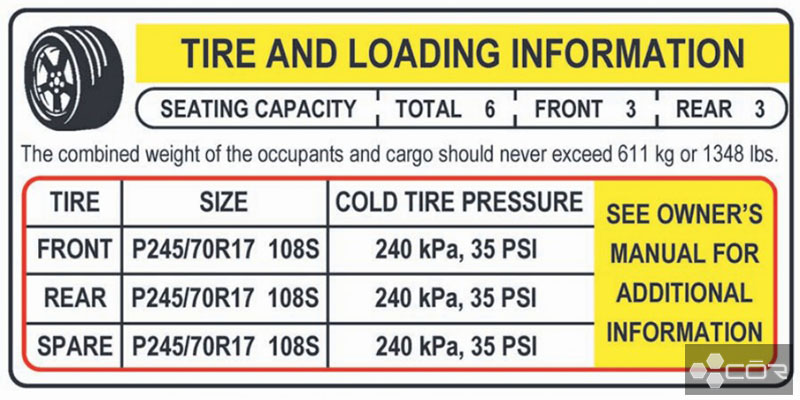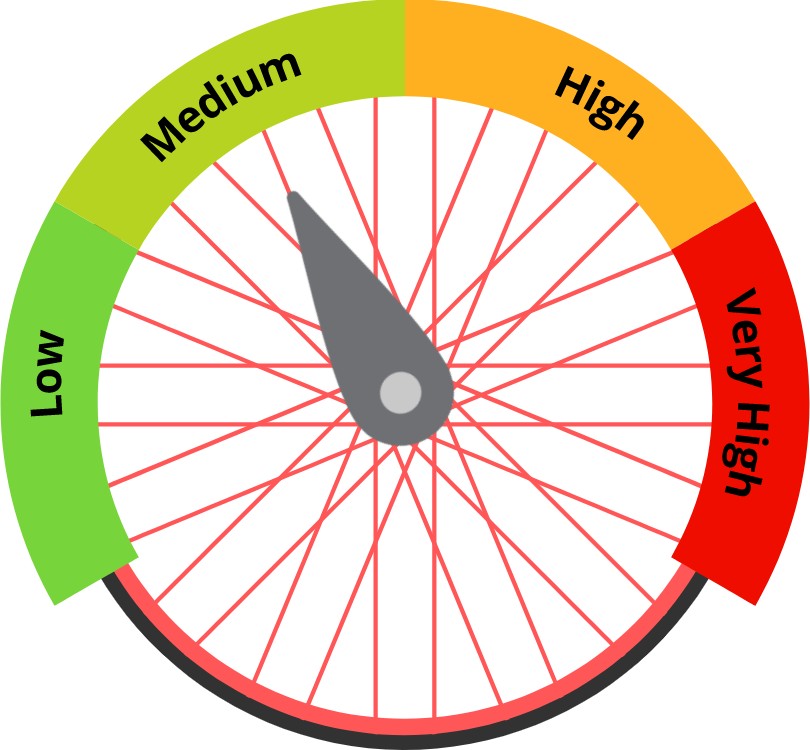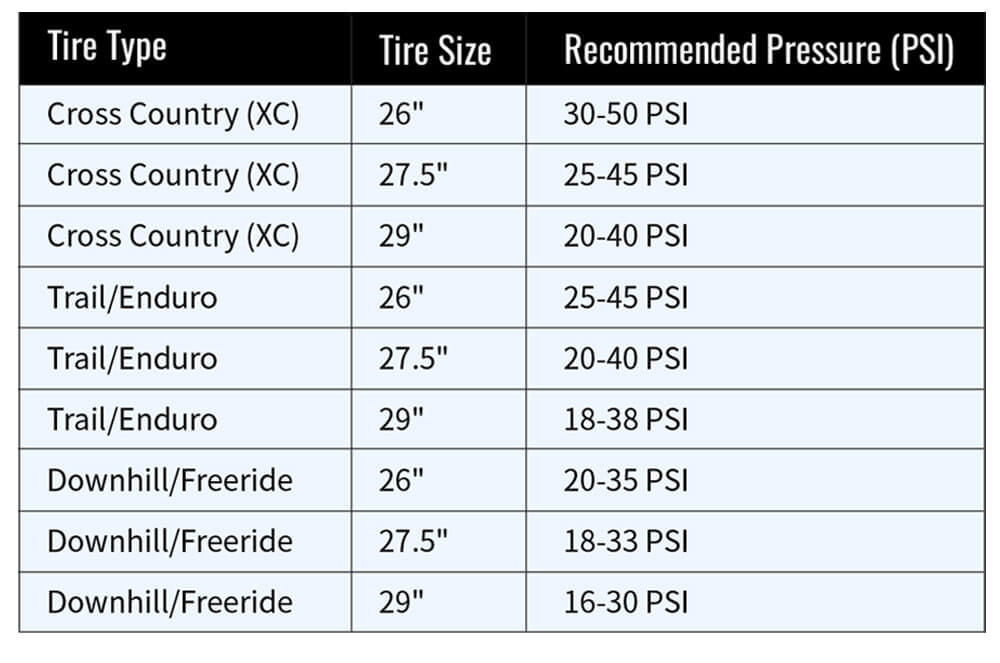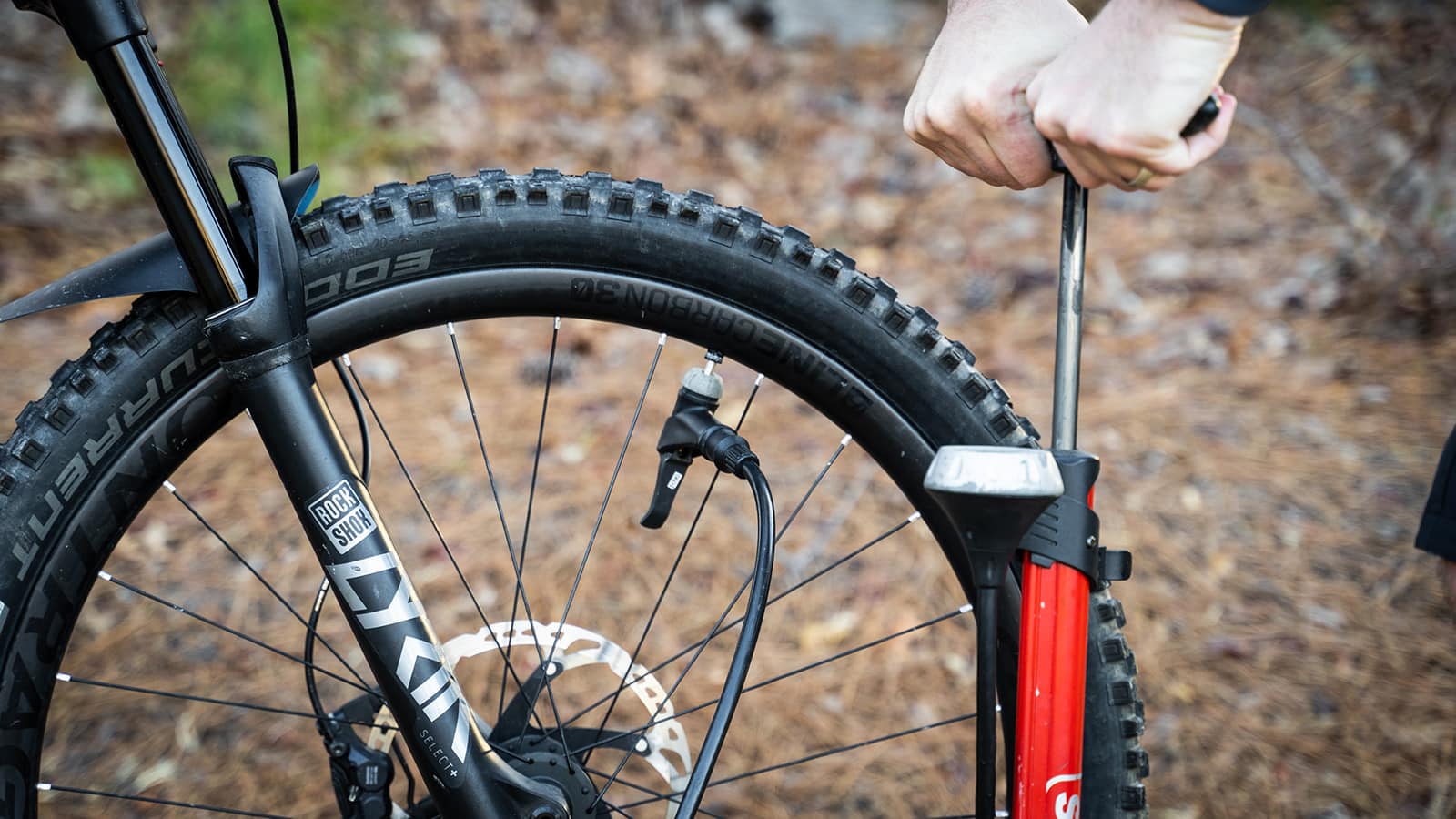Why Tyre Pressure Matters for MTB Riders
Proper tyre pressure is crucial for mountain biking, as it significantly impacts traction, speed, and safety. Incorrect pressure can lead to poor handling, increased risk of punctures, and reduced overall performance. When tyres are under-inflated, they can become prone to pinch flats, while over-inflated tyres can lead to a harsh ride and reduced grip. Furthermore, incorrect pressure can also affect the bike’s suspension, causing it to become less effective and leading to a decrease in overall performance.
For mountain bikers, the ideal tyre pressure is a delicate balance between traction, speed, and comfort. A pressure that is too low can cause the tyre to deform excessively, leading to a loss of traction and increased risk of punctures. On the other hand, a pressure that is too high can cause the tyre to become too rigid, leading to a harsh ride and reduced grip. Finding the optimal tyre pressure is essential to ensure a safe and enjoyable ride.
When it comes to setting the ideal tyre pressure, there are several factors to consider. Rider weight, terrain, tyre size, and riding style all play a crucial role in determining the optimal pressure. For example, a heavier rider may require higher pressure to prevent the tyre from deforming excessively, while a lighter rider may be able to get away with lower pressure. Similarly, riding on technical terrain may require lower pressure to maintain traction, while riding on smooth terrain may allow for higher pressure.
In addition to these factors, the type of tyre being used also plays a significant role in determining the optimal pressure. Different tyre models and brands have varying recommended pressures, and it’s essential to consult the manufacturer’s guidelines to ensure the correct pressure is being used. For example, Maxxis and Schwalbe tyres have different recommended pressures, and using the wrong pressure can lead to reduced performance and increased risk of punctures.
By understanding the importance of proper tyre pressure and taking the time to find the optimal pressure, mountain bikers can significantly improve their performance and safety on the trails. Whether riding on technical terrain or smooth trails, finding the right balance of traction, speed, and comfort is essential to ensure a enjoyable and safe ride.
Understanding Tyre Pressure Measurements: PSI, Bar, and More
When it comes to setting the optimal tyre pressure for your mountain bike, it’s essential to understand the different units of measurement used to express pressure. The most common units used are PSI (pounds per square inch), bar, and kPa (kilopascals). Understanding these units and how to convert between them is crucial to ensure accurate pressure settings.
PSI is the most commonly used unit of measurement for tyre pressure in the United States. It measures the pressure exerted by a column of air on a surface, with 1 PSI equivalent to 1 pound of force per square inch. Bar, on the other hand, is a metric unit of measurement that is commonly used in Europe and other parts of the world. 1 bar is equivalent to 14.5 PSI.
kPa is another unit of measurement that is commonly used in scientific and technical applications. It measures the pressure exerted by a column of air on a surface, with 1 kPa equivalent to 0.145 PSI. While kPa is not as commonly used as PSI or bar in the context of mountain biking, it’s still essential to understand this unit of measurement to ensure accurate pressure settings.
To convert between these units, you can use the following conversion factors:
- 1 PSI = 0.069 bar
- 1 bar = 14.5 PSI
- 1 kPa = 0.145 PSI
For example, if a tyre manufacturer recommends a pressure of 30 PSI, you can convert this to bar by multiplying by 0.069, which gives you a pressure of 2.07 bar. Similarly, if a pressure gauge reads 2 bar, you can convert this to PSI by multiplying by 14.5, which gives you a pressure of 29 PSI.
When reading tyre pressure gauges, it’s essential to ensure that the gauge is calibrated correctly and that the pressure is measured at the correct location on the tyre. The pressure should be measured at the valve stem, and the gauge should be calibrated to the correct unit of measurement.
By understanding the different units of measurement used to express tyre pressure and how to convert between them, you can ensure accurate pressure settings and optimize the performance of your mountain bike.
How to Choose the Right Tyre Pressure for Your MTB
Choosing the right tyre pressure for your mountain bike can be a daunting task, especially with the numerous factors that influence the ideal pressure. Rider weight, terrain, tyre size, and riding style are just a few of the key factors that need to be considered when setting tyre pressure. In this section, we will provide general guidelines for setting tyre pressure based on these factors.
Rider weight is one of the most significant factors that affect tyre pressure. Heavier riders require higher pressure to prevent the tyre from deforming excessively, while lighter riders can get away with lower pressure. As a general rule, riders weighing between 150-200 pounds (68-91 kg) should use a pressure of 25-30 PSI (1.7-2.1 bar) for cross-country riding, while riders weighing between 200-250 pounds (91-113 kg) should use a pressure of 30-35 PSI (2.1-2.4 bar).
Terrain is another critical factor that affects tyre pressure. Riding on technical terrain, such as rocky or rooty trails, requires lower pressure to maintain traction and control. On the other hand, riding on smooth terrain, such as paved roads or smooth singletrack, allows for higher pressure. As a general rule, riders should use a pressure of 20-25 PSI (1.4-1.7 bar) for technical terrain and 25-30 PSI (1.7-2.1 bar) for smooth terrain.
Tyre size is also an essential factor to consider when setting tyre pressure. Larger tyres require lower pressure to maintain traction and control, while smaller tyres require higher pressure. As a general rule, riders should use a pressure of 20-25 PSI (1.4-1.7 bar) for 2.3-2.5 inch tyres and 25-30 PSI (1.7-2.1 bar) for 2.1-2.3 inch tyres.
Riding style is the final factor to consider when setting tyre pressure. Aggressive riders who corner hard and ride at high speeds require higher pressure to maintain traction and control, while more conservative riders can get away with lower pressure. As a general rule, aggressive riders should use a pressure of 30-35 PSI (2.1-2.4 bar), while conservative riders can use a pressure of 25-30 PSI (1.7-2.1 bar).
By considering these factors and using the general guidelines provided above, riders can find the optimal tyre pressure for their mountain bike. Remember, the key is to experiment and find the perfect pressure for your riding style and terrain.
Maxxis and Schwalbe Tyres: A Comparison of Recommended Pressures
When it comes to choosing the right tyre pressure for your mountain bike, it’s essential to consider the specific tyre model and brand. Two popular MTB tyre brands, Maxxis and Schwalbe, have different recommended pressures for their tyres. In this section, we’ll compare the recommended pressures for these two brands and discuss how they may vary depending on the specific tyre model and intended use.
Maxxis Tyres: Maxxis recommends the following pressures for their MTB tyres:
- Ardent: 25-30 PSI (1.7-2.1 bar)
- High Roller: 25-30 PSI (1.7-2.1 bar)
- Crossmark: 20-25 PSI (1.4-1.7 bar)
Schwalbe Tyres: Schwalbe recommends the following pressures for their MTB tyres:
- Nobby Nic: 20-25 PSI (1.4-1.7 bar)
- Rocket Ron: 20-25 PSI (1.4-1.7 bar)
- Hans Dampf: 25-30 PSI (1.7-2.1 bar)
As you can see, the recommended pressures for Maxxis and Schwalbe tyres vary depending on the specific tyre model and intended use. For example, the Maxxis Ardent and High Roller tyres are designed for aggressive trail riding and require higher pressures, while the Schwalbe Nobby Nic and Rocket Ron tyres are designed for cross-country riding and require lower pressures.
It’s essential to note that these are general guidelines, and the optimal tyre pressure for your mountain bike will depend on various factors, including rider weight, terrain, and riding style. Always consult the manufacturer’s guidelines and experiment with different pressures to find the perfect setting for your bike.
In addition to the recommended pressures, it’s also important to consider the tyre’s casing and tread pattern. For example, tyres with a more aggressive tread pattern may require higher pressures to maintain traction and control, while tyres with a smoother tread pattern may require lower pressures.
By understanding the recommended pressures for your specific tyre model and brand, you can optimize your mountain bike’s performance and ensure a safe and enjoyable ride.
The Impact of Temperature on Tyre Pressure: What You Need to Know
Temperature is a critical factor that affects tyre pressure, and it’s essential to understand how it impacts your mountain bike’s performance. As temperature changes, the air pressure inside the tyre also changes, which can affect the tyre’s performance, handling, and safety.
When the temperature increases, the air pressure inside the tyre also increases. This is because the air molecules expand and become more energetic, causing the pressure to rise. Conversely, when the temperature decreases, the air pressure inside the tyre decreases. This is because the air molecules contract and become less energetic, causing the pressure to drop.
For example, if the temperature increases by 10°C (18°F), the air pressure inside the tyre can increase by up to 2 PSI (0.14 bar). This may not seem like a significant change, but it can affect the tyre’s performance and handling. On the other hand, if the temperature decreases by 10°C (18°F), the air pressure inside the tyre can decrease by up to 2 PSI (0.14 bar), which can also affect the tyre’s performance and handling.
So, how can you adjust your tyre pressure to compensate for temperature changes? Here are some tips:
- Check your tyre pressure regularly, especially in extreme temperatures.
- Adjust your tyre pressure according to the temperature. For example, if the temperature is expected to rise, you may need to decrease the pressure by 1-2 PSI (0.07-0.14 bar) to maintain optimal performance.
- Use a high-quality tyre pressure gauge that can accurately measure the pressure in different temperatures.
- Consider using a tyre pressure monitoring system (TPMS) that can alert you to changes in tyre pressure due to temperature changes.
By understanding the impact of temperature on tyre pressure and adjusting your pressure accordingly, you can optimize your mountain bike’s performance, handling, and safety.
It’s also important to note that some tyres are more sensitive to temperature changes than others. For example, tyres with a higher sidewall stiffness may be more affected by temperature changes than tyres with a lower sidewall stiffness.
In conclusion, temperature is a critical factor that affects tyre pressure, and it’s essential to understand how it impacts your mountain bike’s performance. By adjusting your tyre pressure according to the temperature and using high-quality equipment, you can optimize your mountain bike’s performance, handling, and safety.
Tyre Pressure and Suspension: How to Optimize Your MTB’s Performance
Tyre pressure and suspension settings are two critical components that work together to optimize your mountain bike’s performance. While tyre pressure affects the bike’s traction, speed, and safety, suspension settings impact the bike’s handling, comfort, and overall performance. In this section, we’ll discuss the relationship between tyre pressure and suspension settings and provide tips on how to adjust tyre pressure to optimize suspension performance.
The relationship between tyre pressure and suspension settings is complex, and it’s essential to understand how they interact. When the tyre pressure is too low, the tyre can become too soft, which can cause the suspension to become too active. This can lead to a loss of traction, reduced speed, and decreased overall performance. On the other hand, when the tyre pressure is too high, the tyre can become too stiff, which can cause the suspension to become too stiff. This can lead to a harsh ride, reduced traction, and decreased overall performance.
To optimize suspension performance, it’s essential to adjust the tyre pressure accordingly. Here are some tips:
- Start by setting the tyre pressure to the recommended level for your specific tyre model and riding style.
- Adjust the suspension settings to the recommended level for your specific suspension system and riding style.
- Ride the bike and pay attention to how it handles. If the bike feels too soft or too stiff, adjust the tyre pressure and suspension settings accordingly.
- Experiment with different tyre pressures and suspension settings to find the optimal combination for your riding style and terrain.
Some general guidelines for adjusting tyre pressure to optimize suspension performance include:
- For a softer suspension setting, reduce the tyre pressure by 1-2 PSI (0.07-0.14 bar).
- For a stiffer suspension setting, increase the tyre pressure by 1-2 PSI (0.07-0.14 bar).
By adjusting the tyre pressure to optimize suspension performance, you can improve the overall handling and performance of your mountain bike. Remember to always follow the manufacturer’s guidelines for tyre pressure and suspension settings, and experiment with different combinations to find the optimal setting for your riding style and terrain.
Common Mistakes to Avoid When Setting Tyre Pressure
When it comes to setting tyre pressure, there are several common mistakes that riders make. These mistakes can lead to poor handling, increased risk of punctures, and reduced overall performance. In this section, we’ll identify some of the most common mistakes and provide tips on how to avoid them.
Over-inflating tyres is one of the most common mistakes riders make. Over-inflating can lead to a harsh ride, reduced traction, and increased risk of punctures. To avoid over-inflating, make sure to check the recommended pressure for your specific tyre model and riding style.
Under-inflating tyres is another common mistake. Under-inflating can lead to poor handling, reduced speed, and increased risk of punctures. To avoid under-inflating, make sure to check the pressure regularly and adjust it accordingly.
Not checking tyre pressure regularly is another mistake riders make. Tyre pressure can change over time due to temperature fluctuations, tyre wear, and other factors. To avoid this mistake, make sure to check the pressure regularly and adjust it accordingly.
Using the wrong tyre pressure gauge is another mistake riders make. Using a low-quality or inaccurate gauge can lead to incorrect pressure readings, which can affect the bike’s performance and safety. To avoid this mistake, make sure to use a high-quality and accurate gauge.
Not considering the terrain and riding style is another mistake riders make. Different terrains and riding styles require different tyre pressures. To avoid this mistake, make sure to consider the terrain and riding style when setting the pressure.
Some general tips to avoid these mistakes include:
- Always check the recommended pressure for your specific tyre model and riding style.
- Use a high-quality and accurate tyre pressure gauge.
- Check the pressure regularly and adjust it accordingly.
- Consider the terrain and riding style when setting the pressure.
By avoiding these common mistakes, you can ensure optimal tyre pressure and improve the overall performance and safety of your mountain bike.
Conclusion: Finding the Perfect Tyre Pressure for Your MTB
In conclusion, finding the perfect tyre pressure for your mountain bike is a crucial aspect of optimizing its performance. By understanding the factors that influence tyre pressure, such as rider weight, terrain, tyre size, and riding style, you can make informed decisions about how to set your tyre pressure. Additionally, by avoiding common mistakes such as over- or under-inflating tyres, you can ensure optimal tyre pressure and improve the overall performance and safety of your bike.
Remember, the ideal tyre pressure for your mountain bike will depend on a variety of factors, including the specific tyre model, riding style, and terrain. By experimenting with different pressures and paying attention to how your bike handles, you can find the perfect pressure for your needs.
It’s also important to note that tyre pressure is just one aspect of optimizing your mountain bike’s performance. By combining optimal tyre pressure with proper suspension settings, regular maintenance, and a well-fitting bike, you can unlock your bike’s full potential and take your riding to the next level.
Ultimately, the key to finding the perfect tyre pressure for your mountain bike is to be patient, persistent, and willing to experiment. By following the guidelines outlined in this article and using your own experience and judgment, you can find the perfect pressure for your bike and enjoy a safer, more enjoyable, and more rewarding riding experience.
So, get out there and start experimenting with different tyre pressures today With a little patience and practice, you’ll be able to find the perfect pressure for your mountain bike and take your riding to new heights.







